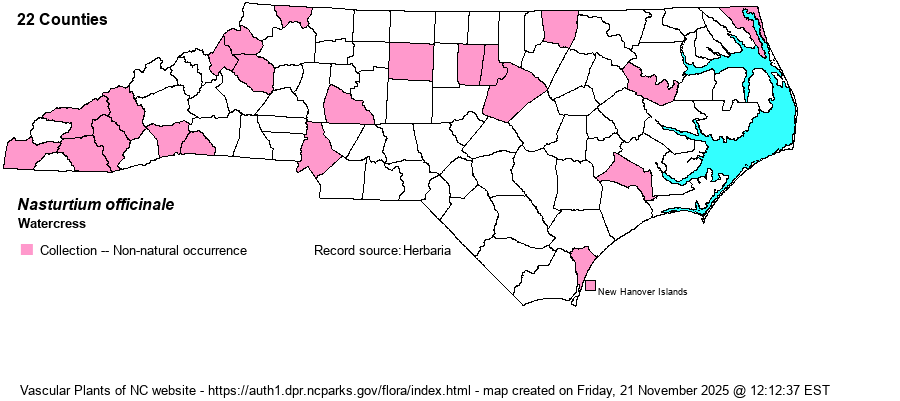| Author | W.T. Aiton | |
| Distribution | Essentially statewide, but large gaps in the Piedmont and Coastal Plain. Extant in montane counties, but not collected (though still presumed extant) elsewhere since the 1970s.
Native of Eurasia and northern Africa; in N.A. essentially throughout. | |
| Abundance | Locally fairly common in the Mountains, uncommon in the Piedmont, and rare in the Coastal Plain. | |
| Habitat | Streams, springs, marshy streamsides, margins of impoundments, wet ditches. Prefers cold, clean water, where it could compete with native species in small mountain streams and seepages, for example. | |
| Phenology | Flowering and fruiting April-July. | |
| Identification | Watercress has thick stems and many leaves. The leaves are sessile and are divided into 3-13 rounded leaflets (in pairs plus a terminal leaflet). The flowers are white, on stalks from axils or terminal. The pods are slender, somewhat curved, on skinny curved pedicels. Inexperienced people might confuse it with the native Cardamine pensylvanica, which also grows in seeps and springs, but that species has erect stems (vs. more ascending or spreading in Nasturtium) and the leaflets are usually narrower and less thick/fleshy. | |
| Taxonomic Comments | | |
| Other Common Name(s) | | |
| State Rank | SE | |
| Global Rank | GNR | |
| State Status | | |
| US Status | | |
| USACE-agcp | OBL link |
| USACE-emp | OBL link |

